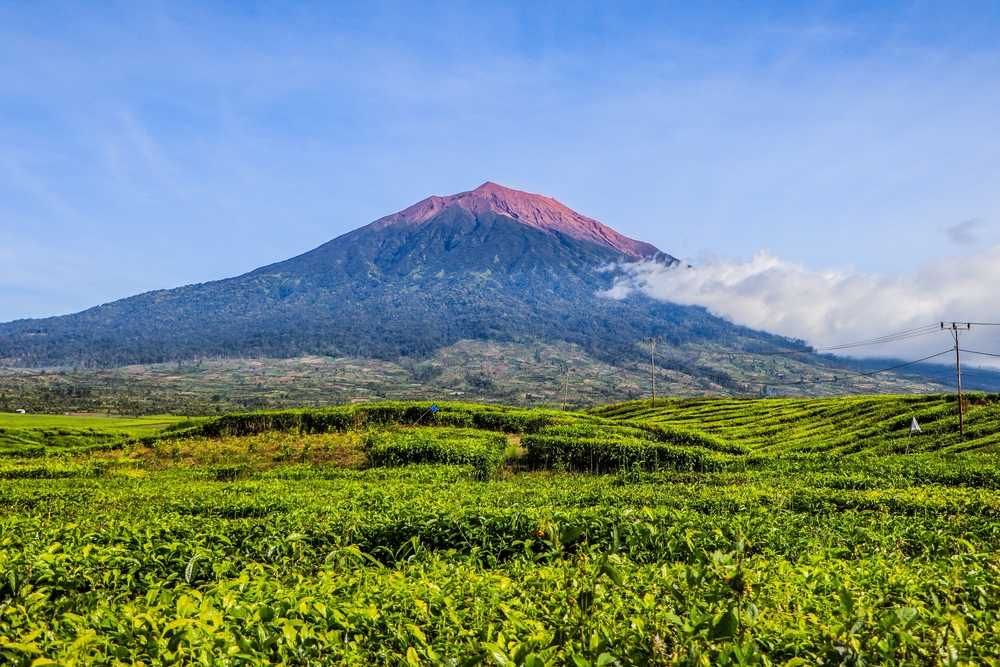Kerinci Seblat Overview
Kerinci Seblat National Park (Taman Nasional Kerinci Seblat), located on the Indonesian island of Sumatra, spans an impressive 5,355 square miles (13,791 square kilometers) and is the largest national park on the island. It stretches across four provinces: West Sumatra, Jambi, Bengkulu, and South Sumatra.
The park forms a vital part of the UNESCO-listed Tropical Rainforest Heritage of Sumatra, recognized for its extraordinary biodiversity and vital role in preserving Indonesia’s natural heritage.
The park’s terrain is characterized by rugged mountains, verdant rainforests, and expansive valleys. Dominated by the Barisan Mountain range, Kerinci Seblat is home to Mount Kerinci, an active volcano and Indonesia’s tallest peak outside Papua, standing at 12,484 feet (3,805 meters). The park also features pristine lakes, such as Lake Gunung Tujuh, the highest volcanic lake in Southeast Asia, surrounded by dense montane forests.
Waterfalls cascade through the park’s steep ravines, adding to its dramatic landscapes. The vegetation varies from lowland dipterocarp forests to montane and subalpine zones, with diverse plant life, including rare orchids, rafflesia flowers, and pitcher plants.
The park’s wildlife is as diverse as its landscapes. Kerinci Seblat serves as a crucial habitat for the critically endangered Sumatran tiger, with an estimated 165 individuals residing within its boundaries. Visitors may also encounter other rare mammals like the Sumatran rhinoceros, Malayan sun bear, clouded leopard, and Asian golden cat.
The park is a birdwatcher’s paradise, hosting over 370 bird species, including the endemic Sumatran ground-cuckoo and Salvadori’s pheasant. Its rivers and wetlands support a wide variety of amphibians, reptiles, and fish species, contributing to the region’s ecological richness.
Popular features of Kerinci Seblat include Mount Kerinci, a magnet for climbers seeking to conquer its summit and enjoy panoramic views. Lake Gunung Tujuh attracts hikers and photographers with its serene beauty, while the park’s numerous waterfalls, such as Telun Berasap, offer tranquil retreats. Cultural experiences abound, as the park is home to traditional villages and the Kerinci people, known for their unique heritage and agricultural practices.
Visitors can engage with the park in various ways, from challenging treks up volcanic slopes to birdwatching expeditions in the rainforest. Guided tours provide opportunities to explore wildlife-rich areas, while eco-lodges and community-based tourism initiatives allow immersion in local culture and conservation efforts. The park’s vast network of trails caters to adventurers of all skill levels.
Kerinci Seblat faces significant conservation challenges, including illegal logging, poaching, and encroachment for agriculture. However, its management has achieved notable successes, such as community-based conservation programs and anti-poaching patrols. Partnerships between local communities, government agencies, and international organizations continue to bolster efforts to preserve this critical ecosystem for future generations.










































































